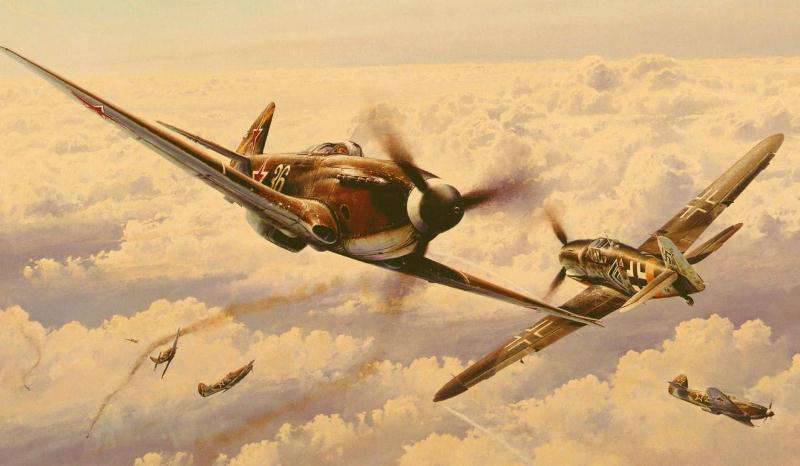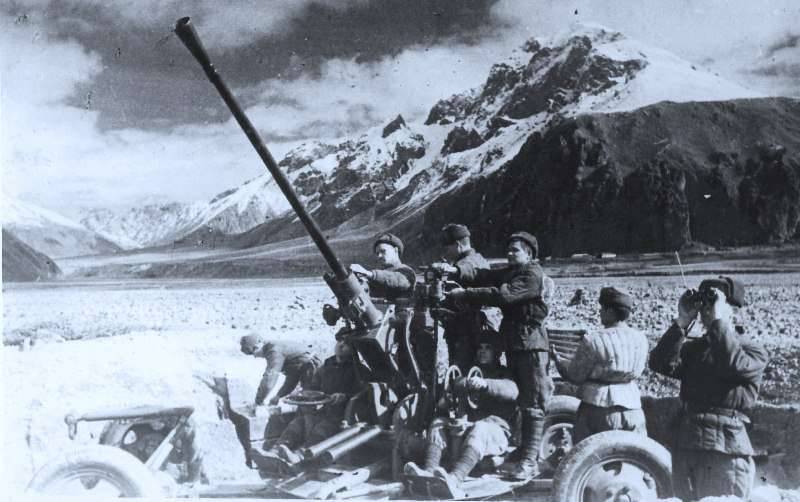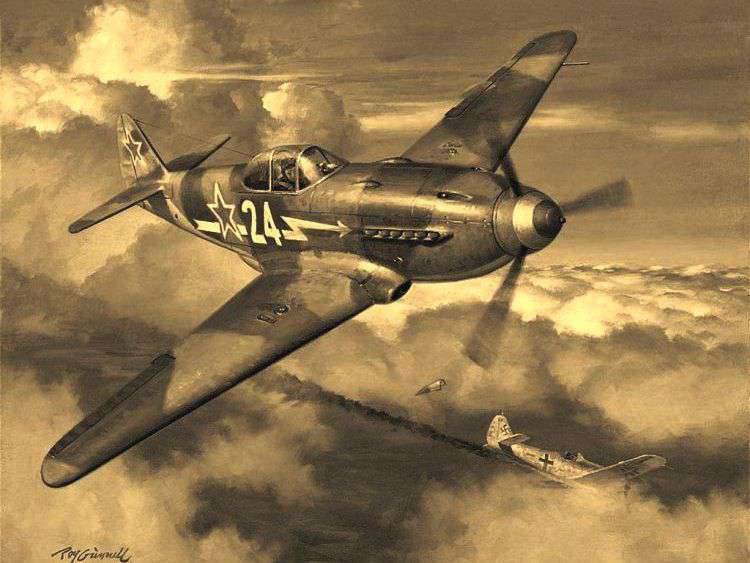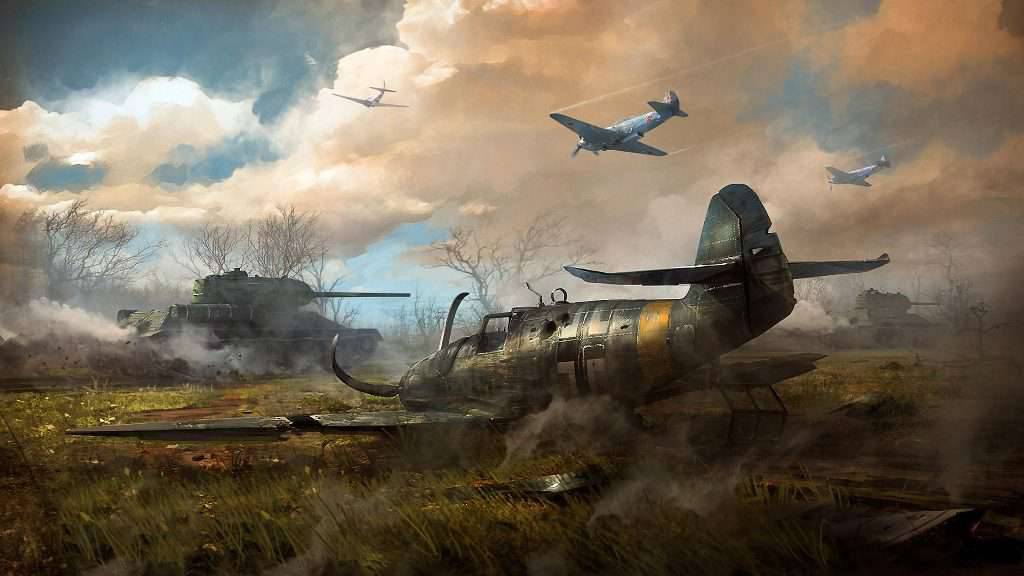The actions of the country's air defense forces during the Petsamo-Kirkenes operation

Participation fleet, marines, scouts, shock aviation in the Petsamo-Kirkenes operation, shortly after the war, became the object of careful study, and the results of these studies have repeatedly, in various forms, appeared in Russian literature. The actions of the country's air defense forces during the liberation of the Soviet Arctic and Norway, on the contrary, are little known. At the same time, the use of anti-aircraft artillery and fighter aircraft in these battles was very active and diverse.
In September 1944, the Supreme Command headquarters assigned the task to the Karelian front to prepare and conduct the Petsamo-Kirkenes operation. The 14-I army, 7-I air army, formations and ships of the Northern fleet participated in the solution of this task; The 1 Corps of the Air Defense Forces (commander Col. IF Korolenko) and the 122 Fighter Aviation Division of the Air Defense Forces (commander Col. FA Pogreshayev) were involved in the operation.
In mid-October, the GKO 1943 reorganized the Murmansk Air Defense Division Region into a corps; and six months later, it was reorganized into the 1 body of air defense.
The involvement of parts of the country's Air Defense Forces in the Petsamo-Kirkenes operation was caused by the need to cover the strike force grouping of the Karelian Front, the most important objects of the front (army) rear and front-line communications. The Soviet command took into account, firstly, that the German 5 air fleet aircraft operated during this period mostly over the battlefield and on the front-line targets; secondly, that the 14 Army did not have enough air defense forces and equipment, and thirdly, it was necessary to strengthen front-line aviation and artillery, which were to assist the ground forces in overcoming developed and deeply echeloned enemy defenses.
For three years, German troops led the improvement of their defense in the Petsamo-Kirkenes area. This area was a strip of mountain tundra along the sea coast. The section from the Barents Sea to the town of Ukhta was covered by the German 19 th mountain rifle corps of the 20 th mountain army. By the time the operation began, it was supported by combat aircraft of the 5 air fleet in the number of 160 units.
Since the autumn of 1944, the number of German air raids on industrial facilities on the Kola Peninsula and the Kirov Railway has decreased. This was a consequence of the increased counteraction of the means of the Murmansk air defense corps and the need to transfer a significant part of the bombing squadrons from the airfields of Norway and Finland to the central section of the eastern front, where the fascists suffered one defeat after another. Sharply decreased the number of flights of enemy air forces. So, in 1942, 10095 sorties were registered within the Murmansk air defense region, in 1943 there were 5435, and in 1944, only 1186.
All enemy air raids on Murmansk in 1944 were successfully repulsed by air defense forces. For example, during one of the nightly raids from 19 bombers, rushing towards the city, three Ju-88 were destroyed and the rest were driven off. The unsuccessful attempt of a single daytime 17 raid of the Bf.109 and FW-190 fighters ended unsuccessfully. They could not overcome the air defense fire; Two enemy fighters were shot down. Subsequently, the Nazis did not even decide to carry out raids on Murmansk even in those cases when the transport ships of our allies' caravans were under unloading.
There was one more circumstance that influenced the decrease in the number of enemy bomber and reconnaissance missions directly to the Murmansk region. At the airfield of Luostari, the Nazis installed several radar stations to monitor the actions of our aircraft. Soviet fighters performing training flights (during this period, pilots of the 122 and Air Defense mastered the piloting technique on the Yak-7B and Yak-9 airplanes), they took couples who were continuously patrolling over the city. Of the total number of 1186 spans made by the Germans in 1944, 1010 (85%) accounted for the Kirov railway and the White Sea-Baltic Canal, and only 176 (15%) was in the region of Murmansk.
During this period, the protection of hydraulic structures of the White Sea-Baltic Canal was carried out by the 404 separate anti-aircraft division of the Ministry of Defense.

The air situation of that period was fully taken into account when developing the upcoming operation. A large amount of anti-aircraft weapons was concentrated on the direction of the main attack. The artillery of the 14 Army, in cooperation with the units of the 1 Air Defense Corps, was to, as emphasized in the 29 September operational directive of 1944, “suppress the enemy’s artillery-mortar grouping, providing the advancing units with a breakthrough of enemy defenses, forcing the Titovka and exit to the area Luostari, Petsamo ".
In accordance with the task at hand, in the 1 air defense case, a thorough preparation for the operation was launched. The anti-aircraft units and units were not only to make advancements to new firing positions, but also to acquire the necessary experience in conducting artillery training. At intensively held classes, questions of interaction with the other branches of troops, deployment at firing positions, direct fire shooting, etc. were worked out. At the same time, the anti-aircraft batteries, divisions and regiments fulfilled their main task - reliably covered the Murmansk and Kirov railways.
Large and complex tasks were to be performed by aviation. A total of about 1000 aircraft were involved in the operation, i.e., superiority over the enemy was six times. An operational directive of the front headquarters of September 29, 1944, the Air Force was tasked with breaking artillery into the enemy’s defensive line, disorganizing its command and control, maneuvering operational and tactical reserves and defeating them on the way to the battlefield, suppressing the artillery and mortar group, covering Tanks and motorized infantry during the development of the operation and the deployment of actions in the pursuit of the retreating enemy.
For the aviation support of the strike force, in addition to the front-line aviation and the fleet air force, the 122 air defense system was allocated. Its pilots had to operate in extremely unfavorable conditions: difficulties of basing (the lack of suitable aerodrome sites, the complexity of building new runways, the underdeveloped road network); difficult meteorological conditions (overcast weather, low cloudiness, abundant precipitation); frequent and severe magnetic storms, sometimes completely eliminating the use of radio communications; and, finally, the complexity of visual orientation in flight.
Considering these facts, the Air Defense Command improved the fighter guidance system during the preparatory period for the operation. A fundamentally new grid of guidance was developed, based essentially on radar data. For the organization of interaction on the anti-aircraft artillery, a special duty officer from the 122 Fighter Aviation Division of the Air Defense was allocated, which allowed the command to make timely adjustments to the decisions made. Thanks to the optimal use of the available capabilities for targeting fighters in the Arctic, a clear management organization, the pilots of the division successfully completed their tasks.
Since the Petsamo-Kirkenes 122 Fighter Aviation Division had to deal not only with the main task of covering Murmansk and the Kirov railway facilities, but also working together with front-line units over the battlefield, the 7 Airborne Headquarters developed a timely and thorough interaction plan . Here, features of the basing of aviation (front and air defense) were taken into account, a system of mutual information about the air situation was developed, and questions of the combat use of Air Force units were agreed upon. The plan indicated the targets to be destroyed, the time and order of the aircraft.

Of great importance for the interaction was the joint arrangement of control points. A positive role was played by the sending of communications officers with communications equipment to interacting aviation, as well as general military units. The liaison officers carefully studied the enemy’s first line of defense and clarified the targets to be destroyed during the air preparation period of the attack. At the same time, a system of marking the line of combat contact was worked out in detail, in order to avoid striking its parts.
During the preparatory period, the 122 pilots of the IAD opened up the defense system, important enemy strongholds, a grouping of its troops, and the basing of aviation. They helped to determine the condition of roads and crossings in the area of delivering the main attack, coastal areas advantageous for the landing of troops, and landing sites for aircraft. Aerial reconnaissance data provided invaluable assistance to the front command.
October 6 1944 X. 122 air defense unit went into operational control of the commander of the 7 Air Force, but continued to provide cover for Murmansk and the Kirov Railway. In the evening, the division headquarters received a combat order, in accordance with which the pilots were to block enemy airfields in Luostari and Salmijärvi during the massive strikes of our attack aircraft and bombers; in the interval between departures to cover bomber and assault aircraft, be ready and destroy enemy planes, preventing them from entering the battlefield and into the covered area.
The Soviet offensive began in the morning of October 7. By the forces of 99 and 131 of the rifle corps, the enemy’s main line of defense was broken through. After which our troops forced the river. Titovka and entrenched on its western shore. Due to difficult weather conditions, aviation was able to begin its operations in the afternoon. The 122 Air Defense Corps ensured the attack aircraft, which launched assault attacks on the German strongholds in the area of Lake Chapre, covered infantry units and formations on the battlefield. 30 sorties were flown; meetings with the enemy aircraft did not happen.
October 8 pilots of the division covered the advancing rifle formations at the lake. Chapr and crossing over the river Titovka. They carried out 90 sorties, conducted three group air battles. Eight Yak-9 under the command of Lieutenant Colonel Mikhailov in 2 km south-west of Lake. Loyavr began a battle with 12 enemy planes. Although numerical superiority was on the side of the Germans, they preferred to leave the battlefield and hide. At the same time one FW-190 shot down. In 11 hour. 50 min. in the same area, four Yak-7b (769 Fighter Aviation Regiment) destroyed two Bf.109.

The next day, intense air battles broke out over the battlefield. In the second half of the day, two bosses were covered by bombers operating on the Luostari airfield. The Nazis took to the air fighter. A fight started. Soviet pilots turned the enemy to flight, while shooting down one plane. Bombers successfully completed the task.
The troops of the 14 Army, supported by aviation and artillery fire, during three-day battles, despite stubborn enemy resistance, broke through the German tactical defense in the direction of the main attack and, developing success, launched attacks on Petsamo and Luostari. The enemy, suffering heavy losses, was forced to withdraw. On October 12, our troops captured an important road junction, Luostari, and on the night of October 15, Petsamo. These days, the 122 and Air Defense pilots covered the advance of rifle units and tanks in the Luostari area. 106 airplanes were produced; in group air battles two Bf 109 were shot down.
Enemy aviation, deprived of its main airfields, hastily began to redeploy to Northern Norway. From there, his single planes at night and small groups during the day tried to maintain their outgoing troops. There were also cases of reconnaissance of our communications and objects within the boundaries of the 88 Air Defense Corps by the Ju-109 and Bf.1 aircraft. In October 1944, the 284 overflight of the enemy aircraft was recorded within its boundaries.
Conducting an active fight with the enemy's air force, the anti-aircraft units of the 1 Air Defense Corps destroyed 23 enemy aircraft. After the liberation of the Arctic settlements from the Germans, an anti-aircraft units and subunits of the 1 Air Defense Corps were maneuvered; in particular, to cover the city and port of Petsamo, 19 West was relocated there. Thanks to the skillful maneuver of anti-aircraft artillery, it was possible to securely cover important objects.
The Soviet Air Force completely captured the air superiority. When offensive ground forces arrived, when artillery and tanks did not keep pace with the rifle units, aviation became the only means of supporting them. An attempt by the enemy to prevent the actions of our Air Force failed.
From 16 to 24 in October, the 122 iad pilots successfully provided cover for attack aircraft and bomber strikes in the Nikel area. They also covered the infantry units on the battlefield, accompanied the IL-4 aircraft transporting ammunition and fuel to the Luostari airfield, and finally performed the tasks of the air defense of Murmansk and its port. With these goals, the pilots of the division made 316 sorties.
In total, during the Petsamo-Kirkenes 122 operation, the fighter air division produced 935 sorties, knocking down an 31 enemy aircraft. During bombardment strikes, according to the crew reports, the enemy's residential strength was destroyed, the ammunition depot was blown up, and the fire of two anti-aircraft batteries was suppressed. The pilots of the division successfully provided for the actions of the bomber and assault units, together with the units of the 7 Air Force, deprived the enemy of the ability to actively act against our troops on the battlefield, and also securely covered Murmansk, its port and Kirov railway facilities from the air.
October 25 was freed from the Nazis main enemy supply base Kirkenes. Two days later, our troops captured Neiden and reached Nautsi. October 29 Petsamskaya region was completely cleared from the enemy.
The defeat of the German troops in the Far North was of great military, economic and political importance. The enemy was forced to leave the territory of the polar regions of the Soviet Union, Norway and move west almost 150 km. Murmansk and Kirov Railway were now in complete safety. During the fighting, Soviet aircraft destroyed the enemy aircraft 144.
Characteristic of the operation was that in the polar conditions, the anti-aircraft units of the 1 Air Defense Corps participated in artillery preparation, and the 122 and Air Defense units - to perform front-line aviation tasks. The command of the 1 Air Defense Corps regrouped those divisions that participated in artillery training. In a short period of time (the operational directive of the front was received on September 29, the operation began on October 7), the personnel of the anti-aircraft artillery units had to master, in essence, a new type of firing at ground targets. At the same time, air defense units covered the main grouping of our troops and the most important rear facilities from air strikes.

Fighter aviation defense performed its main task - defended from the attacks of enemy aviation Murmansk and Kirov railway. In addition, the 122 pilots escorted bombers and attack aircraft, covered the advancing rifle units and formations, ground attack targets, blocked enemy airfields, and performed a number of other tasks.
During the pursuit of the retreating enemy, in order to cover the objects in the liberated territory, parts of the 1 Air Defense Corps carried out a maneuver with forces and means. A special role was played by the mobility of small-caliber anti-aircraft artillery, which could open fire on enemy aircraft that were suddenly appearing from the wheels without getting off the road. Some battalions of medium-caliber anti-aircraft artillery were attracted from the air to the objects of the sprawling army rear. The liberated large population centers, as well as bridges and crossings, initially covered the anti-aircraft units of the military air defense, then they were replaced by units of the 1 Air Defense Corps.
October 31 1944 of the year 122 Air Defense ID was given the honorary title of Pechenga. Somewhat earlier, 33 and 426 were awarded the Order of the Red Banner.
Sources:
Inozemtsev I. The Winged Defenders of the North. M .: Voenizdat, 1975. C. 138-151.
Svetlyshin N. The Air Defense Forces of the country in the Great Patriotic War. M: Science, 1979. C. 186-197
Komarov N. The country's air defense forces in the Petsamo-Kirkenes operation. // visage 1973. No.10. C.28-32
Rumyantsev M. Defeat of the enemy in the Arctic (1941 — 1944). M .: Voenizdat, 1963. C. 122-143, 187-191, 236-257.
Group of authors. Air defense forces of the country. Historical feature article. M .: Military publishing house, 1968. S.232-237.
Information